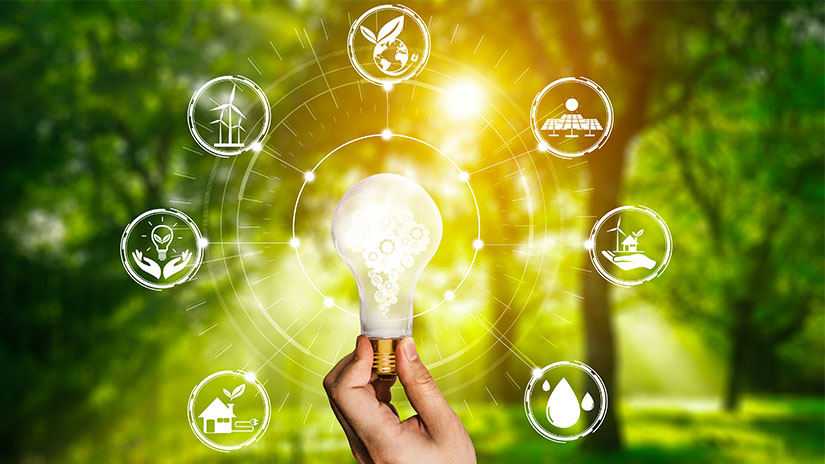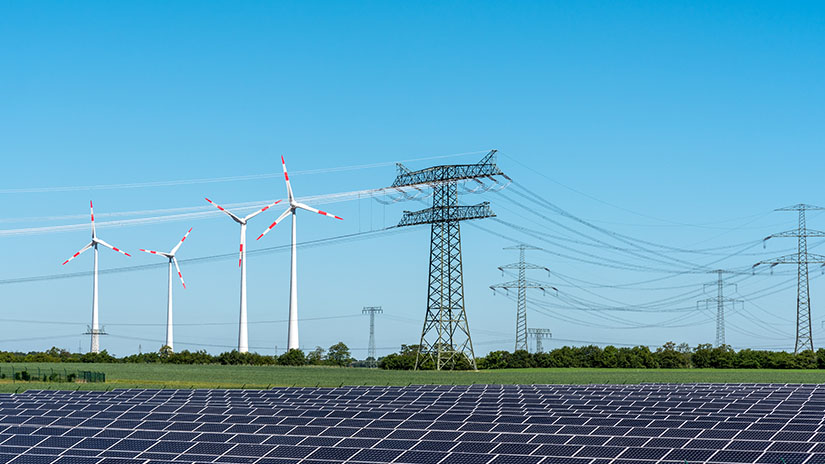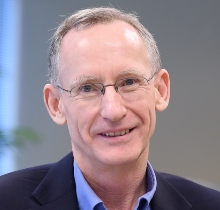By Gary Rackliffe, Vice President, Market Development and Innovation at Hitachi Energy
To address the rise in CO2 emissions in the U.S., many states have developed greenhouse gas (GHG) reduction goals. Though states differ in their approaches, most state-level GHG emission goals are to reduce carbon emissions 40% by 2030 and 80% by 2050.1 Achieving this will require states and the federal government to work together to invest in a greener grid that will require improved transmission capacity. National and regional planning will also need to be included.
Over half of emissions come from vehicles and power generation.2 Last year, about 5.13 billion metric tons of CO2 emissions were produced from energy consumption in the U.S. alone,3 with power generation and transportation being the two largest producers of GHGs. To achieve our goals, we’ll need to reduce carbon emissions from both of these sources to zero. The transportation industry must move from gasoline and internal combustion engines to electric vehicles (EVs), and the energy industry must dramatically increase power generation from carbon-free sources like hydroelectric, wind, solar and modular nuclear power.
Controlling emissions is both a societal issue and a policy issue. And you can’t support these goals without a reliable electric grid. However, grid modernization poses significant challenges as power systems evolve. Upgrading aging infrastructure, integrating diverse renewable sources and managing decentralized energy generation becomes paramount. Fortunately, the technologies needed to make that happen are here today.
We’ve made a good start, but there is a long way to go. Recent estimates show that carbon-free generation resources deliver approximately 40% of generation in the U.S. today, with the other 60% derived from fossil fuel–based generation.4 To reach the 2050 GHG reduction goals, utilities have about 30 years to offset those fossil fuel emissions or retire and replace fossil fuel–based generation resources with carbon-free energy generation.
This is an ambitious goal. But there is good news. First, the levelized cost of energy for renewable generation today is competitive with other sources of generation — there is no longer an economic penalty for renewable generation. Second, the technology we need to overcome the challenges associated with carbon-free energy generation already exists. Solving this problem is no longer a matter of inventing new technologies, but a matter of figuring out how to use what we have more effectively.

It’s long been understood that the adoption of renewable resources can drive carbon reductions. However, there are also long-standing concerns about how integrating renewables and moving away from traditional base-load sources affect grid reliability, power quality and resilience. For example, the ability to efficiently transfer energy from areas with favorable conditions for renewable energy development to major load centers has been a significant roadblock.
Growing demand for electricity is another challenge. Efficiency improvements over the last 5 to 10 years have enabled consumption to remain relatively flat, but changes like growing adoption of EVs could soon change that. The National Renewable Energy Lab estimates that EV charging loads will increase the kilowatt hours delivered by the grid 20% to 40% between now and 2050.5 The net impact of these changes is an increased load on the power grid, all while we are working to move 60% of our energy generation away from fossil fuels.
Achieving those goals will require an investment in the grid modernization and expansion of the transmission infrastructure to accommodate renewable energy sources and move energy from where it is generated to where it is needed in a reliable and affordable way. Technology is a key factor in making that happen.
Emerging technologies including big data, artificial intelligence (AI) and automation will play a critical role. These data-driven technologies can provide actionable information that gives power systems the flexibility to dynamically adjust to real-time supply and demand conditions and therefore improve grid performance and efficiencies. The implementation of these technologies will facilitate the needed shift toward sustainable power sources.

Hitachi is committed to sustainability and to reducing GHG emissions. Grid modernization technology has become essential for meeting the ever-increasing demand for electricity and efficiently integrating carbon-neutral energy sources into the power grid. With technologies developed by Hitachi Energy, we are already implementing solutions that will make a sustainable power grid a reality.
For example, Hitachi Energy has collaborated with governments and private companies worldwide on several projects using high-voltage direct current (HVDC) technology. HVDC is a highly cost-efficient and sustainable method for transmitting large amounts of electricity over long distances. As a key enabler in the future energy system based on renewables and interconnecting grids, HVDC transmission technology truly enables modernization and resilience for smarter, greener power grids. Research suggests that a nationwide HVDC network built to support wind and solar resources could reduce carbon emissions by as much as 80% by 2030, without increasing electricity costs for consumers.6
A recent Hitachi Energy project linking Norwegian and German power markets is a compelling example of the benefits that HVDC can bring. The NordLink interconnection provides the German power grid with reliable access to hydropower resources in Norway, and Norway with access to Germany’s substantial base of renewable resources such as wind and solar energy. Nearly doubling the power transmission capacity of the system, NordLink is a significant step toward strengthening Europe’s power supply with the integration of grid-connected electricity from renewable energy sources.
Another way Hitachi Energy is working to address transmission capacity is to upgrade regional AC transmission systems with Flexible Alternating Current Transmission Systems (FACTS). FACTS are power quality and grid stabilization devices that can be integrated into existing AC transmission systems to increase power transfer capability, stability, and control.
In addition to maximizing and stabilizing the grid itself, power companies and industries will need to monitor the condition and health of assets. Hitachi Energy has developed technology that measures performance and delivers diagnostics on everything from generation equipment to assets such as transformers. This data-driven energy asset management technology enables organizations to enhance their understanding of power flow, loading, asset health, costs, and how to optimize the generation mix to achieve emissions goals in the most cost-effective manner.
The time to invest in a green grid is now. The largest hurdle to meeting our GHG reduction goals is modernizing the transmission grid to accommodate electrification and renewable energy generation. Investing in transmission system technology that expands the capacity to transfer energy from areas with favorable conditions for renewable energy development to major load centers is critical.
The good news is that we have the technology to meet these goals today. And now is the time to take the right steps that will get us there. Hitachi Energy have the technology, knowledge and expertise required — and we are using it to balance social, environmental and economic values to power good through a sustainable energy future.
Learn more about HVDC systems in action and grid interconnections.

Vice President, Market Development and Innovation, North America, Hitachi Energy
Gary has extensive experience leading utility network control software development, marketing, sales, and business development, as well as smart grid and grid modernization innovation and strategic initiatives. He is a member of the GridWise Alliance Technical Council (past board member), the Department of Commerce Renewable Energy and Energy Efficiency Advisory Committee, and the Department of Energy ADMS Steering Committee. He holds BS and ME degrees in electric power engineering from Rensselaer Polytechnic Institute and an MBA from the Tepper School of Business at Carnegie Mellon University. He is a registered professional engineer and an IEEE senior member, has coauthored a transmission and distribution planning book, and has written numerous technical papers and articles.